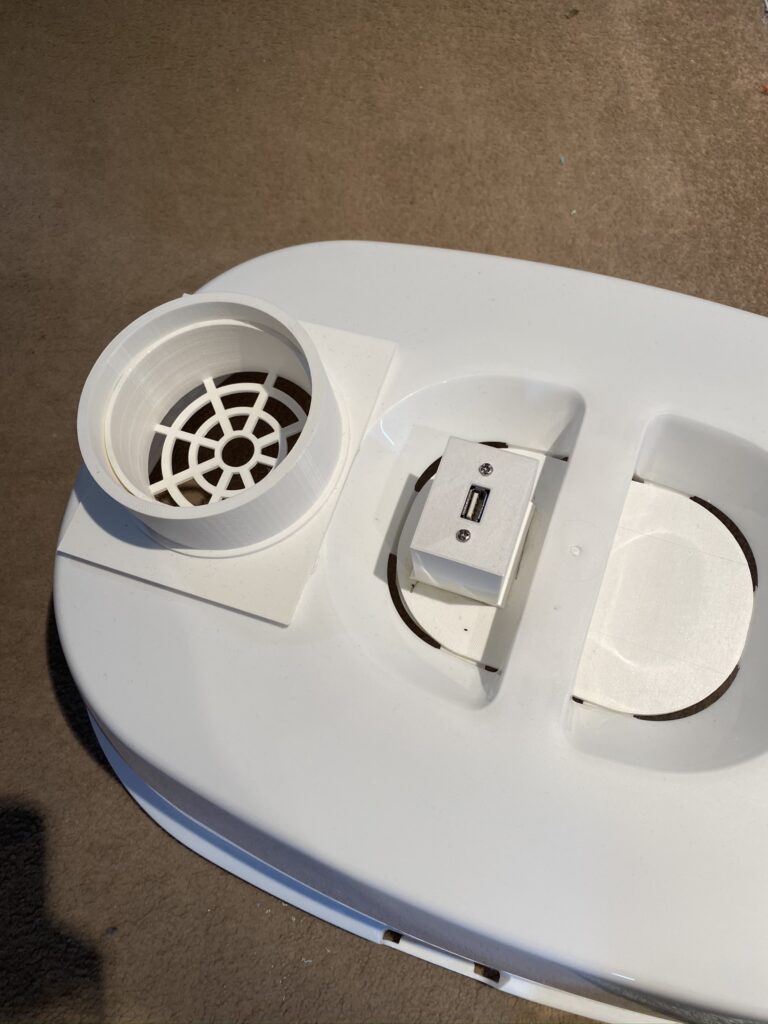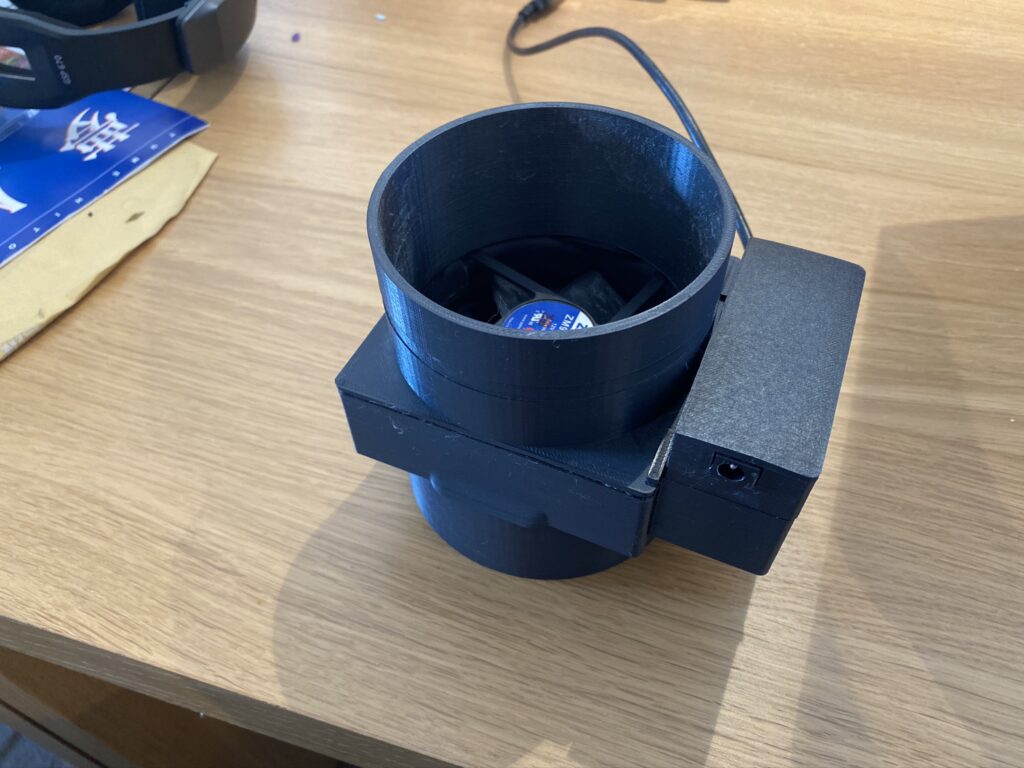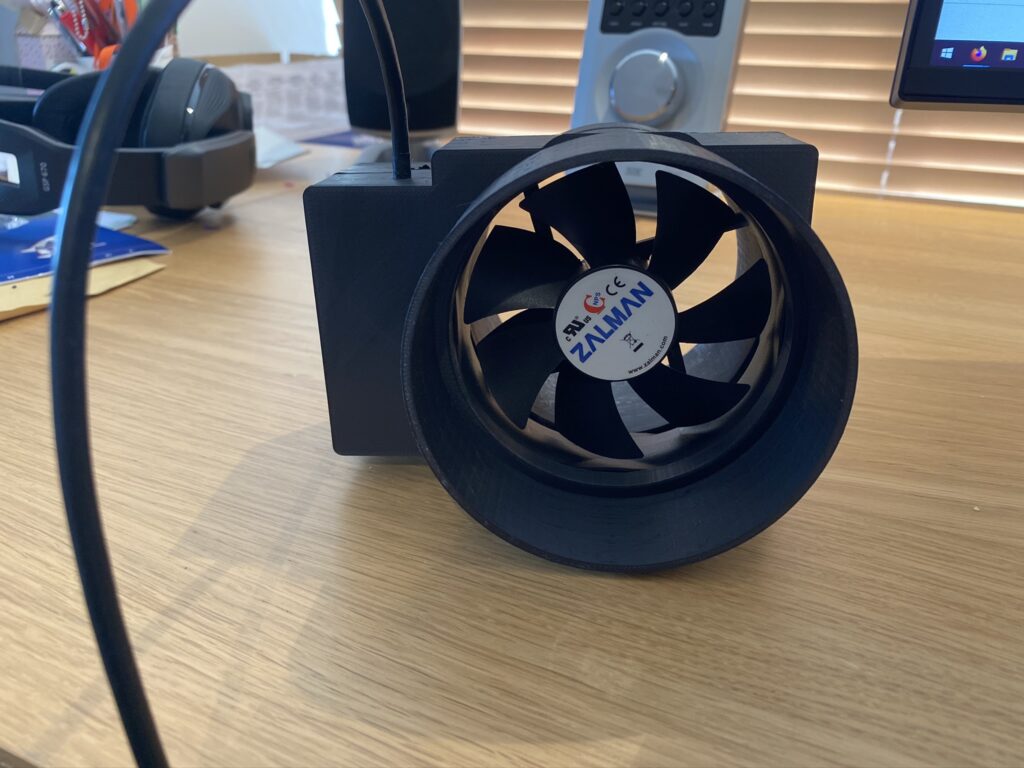I relented and we got a cat. He’s a good little guy, but he does create some ungodly smells. Unfortunately the best place for his litterbox is in an alcove in our lounge. Even with a window open (not possible in all weather) some smells do waft over.

This presented an excellent opportunity to over-engineer a solution using some electronics, 3D printing, and indoor hydroponics apparatus!
This is the result:

To start, I needed another litter box to play with. I didn’t want to deprive the poor guy of his toilet.
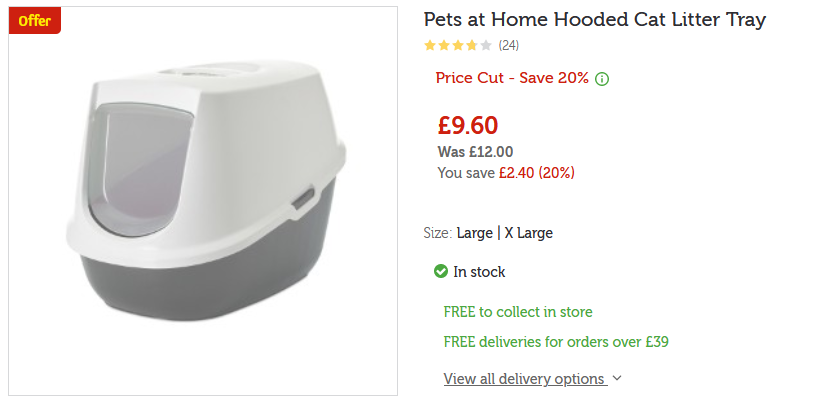
The overall design was going to be simple:
- Block off unnecessary holes in the litter box.
- Add a motion sensor
- Create a vent hole and add an exhaust fan
- Add electronics to trigger the fan when it detects a visitor
- Vent the fan out of the window using a hose
I got to work designing the components needed using Autodesk Fusion 360.
The unnecessary vent holes on the top of the box were blanked off with a piece of printed white PLA plastic. This also gave me a hole in which to mount a PIR sensor. The top cover was glued in place with Bostik Hard Plastic Adhesive.
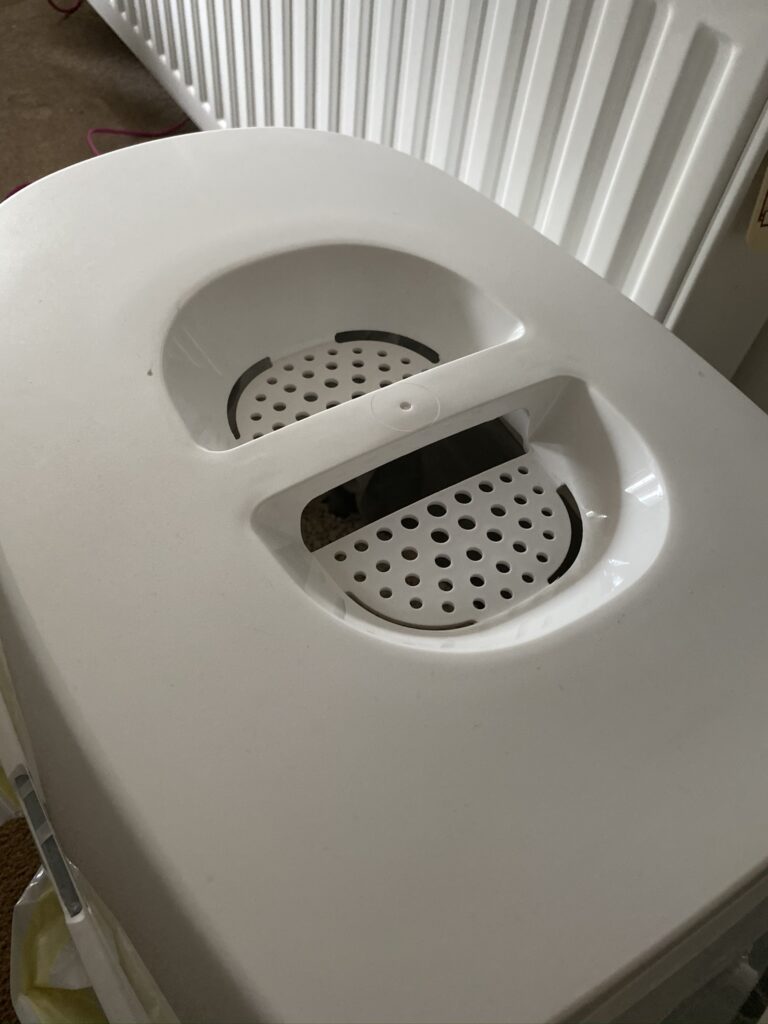
Vent holes needed blocking to stem the flow of nasty odours. 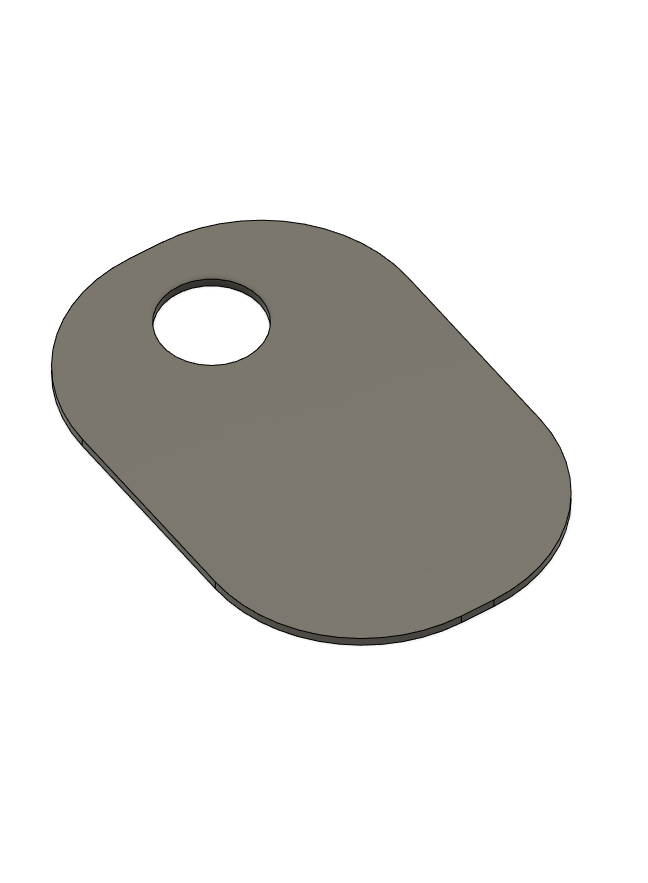
The roof component was probably the easiest part of the design.
Everything needed to be easily detachable so that the litter box could be moved and cleaned. Therefore the PIR was attached to the rest of the system using a USB connector I had lying around.

PIR external housing with USB connector. 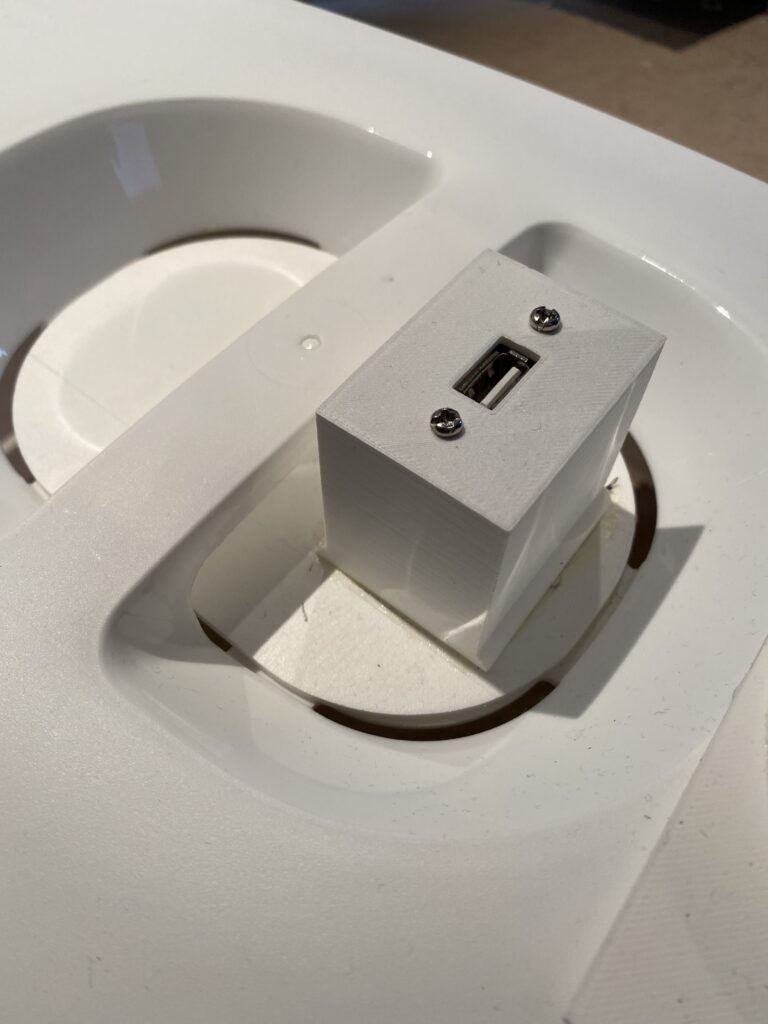
The assembled part glued to the printed cover.
A vent hole was dremeled into the lid and I designed an adaptor to sit in this spot to allow for the attachment of a hose.
I also added a grille to stop the cat doing a John McClane and disappearing into the vent.
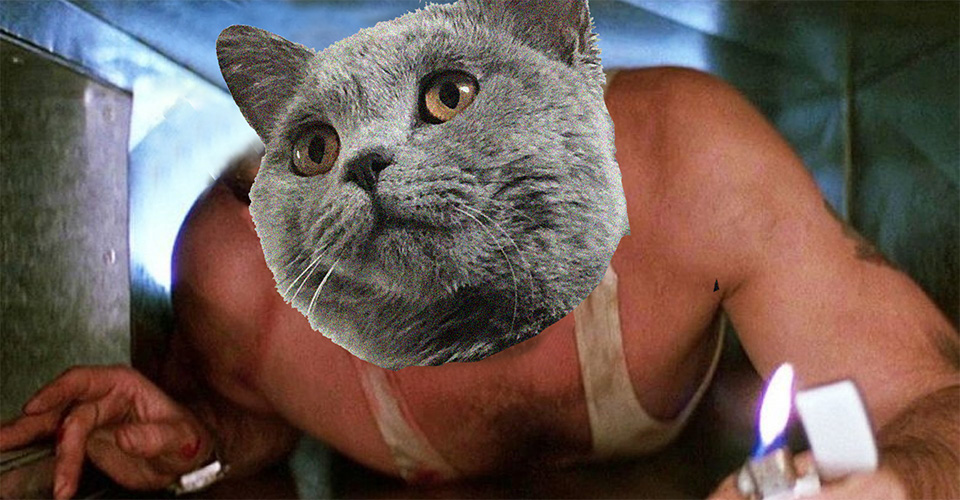
While the system is simple, I still needed to bake in a bit of logic. I needed to prevent false PIR triggers (often caused by lighting) and I wanted to delay the fan activation (so we don’t spook the cat mid-business) and then run the fan for a pre-determined amount of time.
This sounded like a great job for an Arduino Pro Mini. A compact, inexpensive microcontroller with digital input and output pins. Luckily I had one spare from another protect. The Arduino and PIR sensor both run on 5 volts.
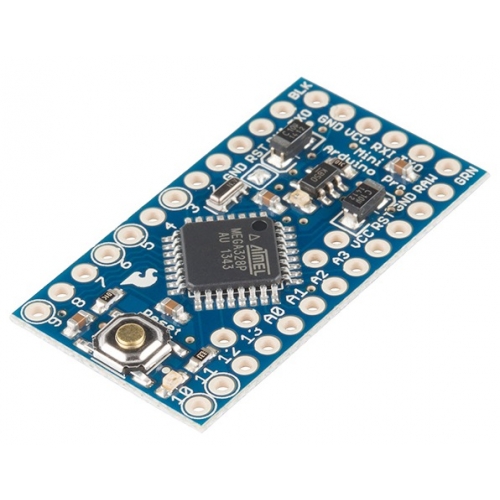
Arduino Pro Mini 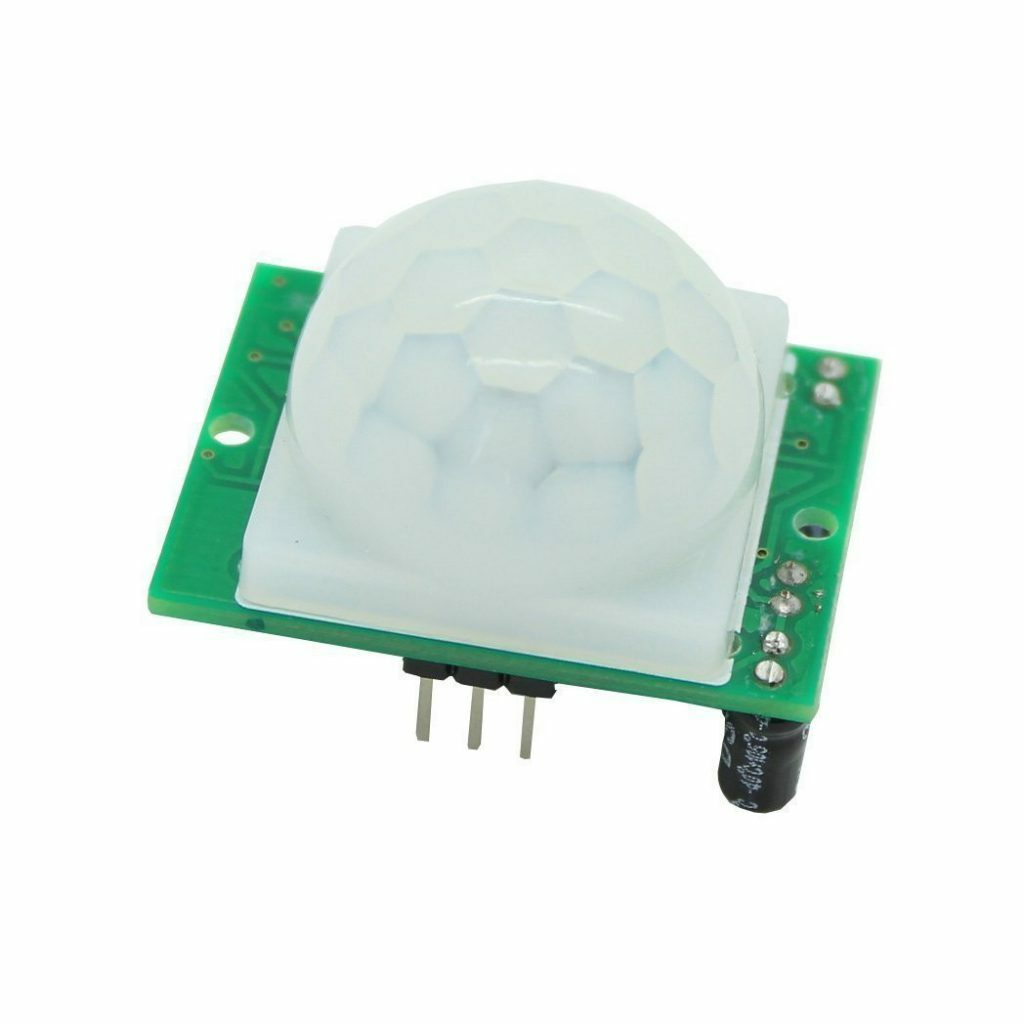
PIR Motion Sensor
I wrote a small routine that monitors the PIR input 10 times a second. If the PIR triggers then its output goes HIGH for around 10 seconds. We need to wait a little longer than 10 seconds to be sure the trigger was due to valid movement and not a change in lighting (or someone knocking the box). Through trial and error a value of 16 seconds seems perfect. We then wait for the motion to be clear for another 16 seconds after which we can start the fan, to keep things consistent I run the fan for 16 minutes and this works well.

Fans of flow charts will love this. 
Arduino source code.
The circuit was pretty basic, it took an input from the PIR sensor on pin D8 and then D9 was used as an output to drive a transistor (2N2222 to be exact) which operated a 5v relay. The relay then switched the 12v supply to power the fan.

Now that I knew the size of my electronics (including power supply), I was able to model and print an enclosure which also housed the 80mm fan.
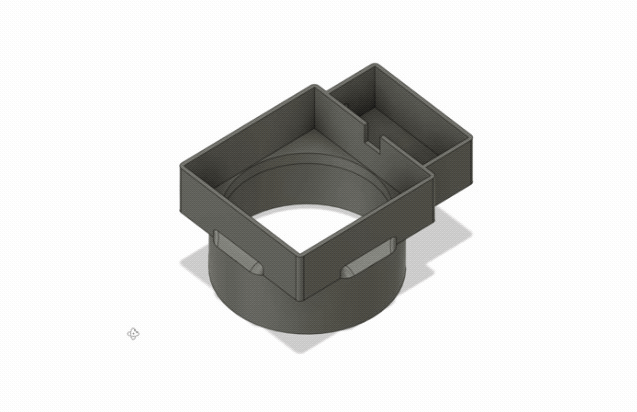
The fan and electronics were put into place and fitted very snugly.
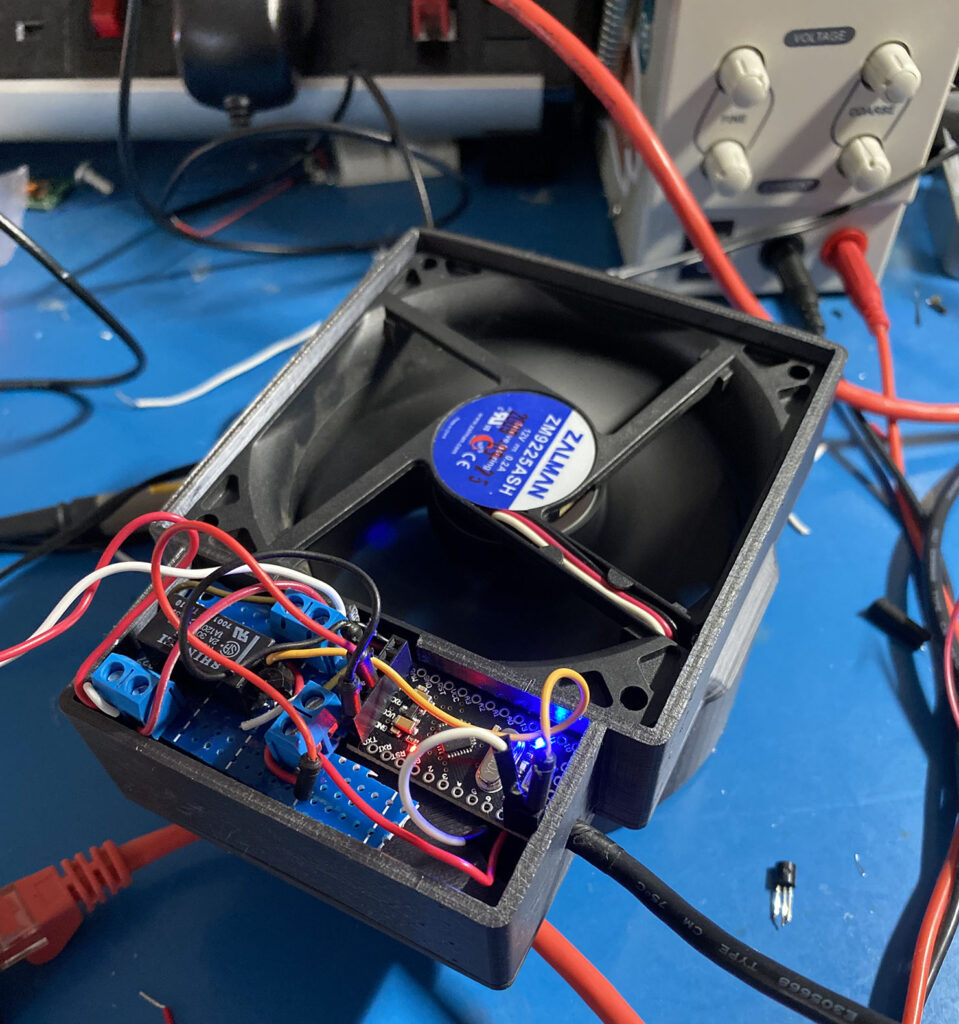
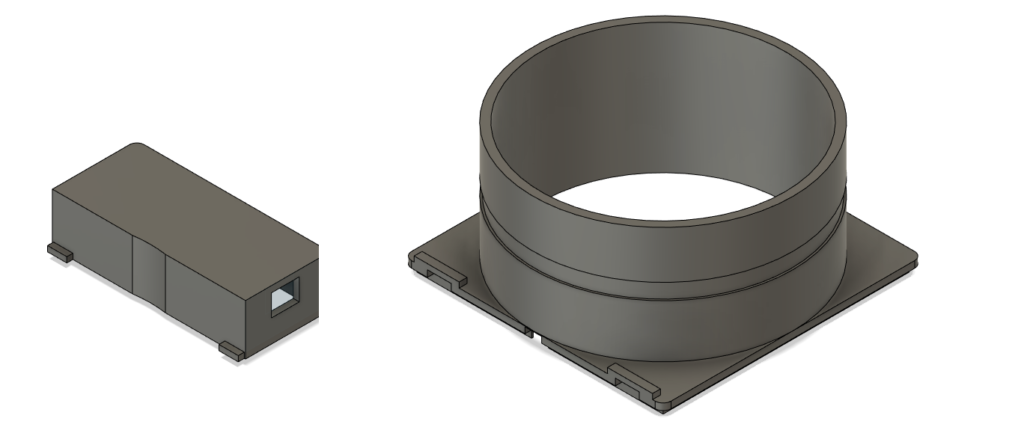
Once any bugs were ironed out the main unit was assembled, and glued together using Plastic Weld Cement.
I had made a very effective cat poo smell distributor at this point. I most definitely needed to send that smell somewhere else. My initial plan was to vent it out of the window using a 100mm hose I had spare. I then realised there is another group of people who often want to extract strong odours from their homes: ‘indoor horticulturalists’.

Due to this seemingly booming market of residential plant enthusiasts there are a large number of carbon based air filters now available online. Reading the reviews was most entertaining, and I ultimately settled on a Rhino Pro unit, which fits perfectly onto my 100mm hose.
The verdict? Perfect. I did start to wonder near the end of this project if it was going to be worth it. But I can happily report that the system works, the bad smells are almost totally gone, and Percy goes about his daily business as if nothing has changed.

